I really like my JBC soldering station. And although expensive and some would say overrated, it remains my preferred brand for soldering equipment.
The first one I ever used was AD2200. Later, the AD2700 took over as the main workhorse, and for the past five years, CD2E.

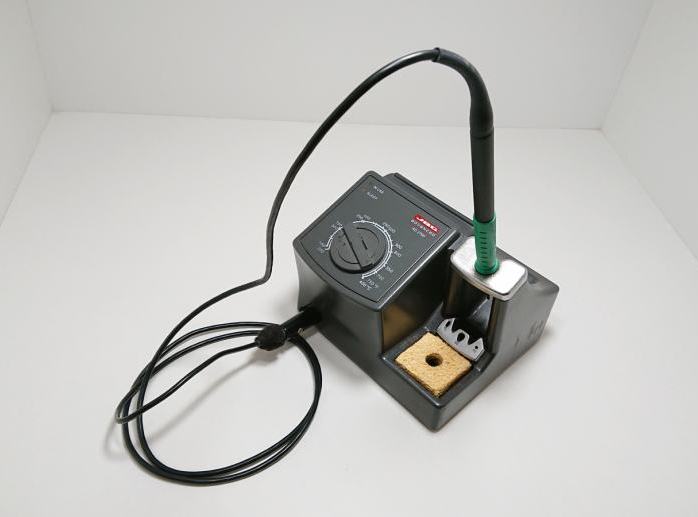
One thing they all have in common is the T245 Handle with a plethora of tips. Those were the times before JBC equipment was famous and overpriced, even on the secondhand market.
T245 is a sweet spot for a handle. Truly a general purpose one. And although it has SMD capable tips, I just don’t find them as good for precision work as some of the other handles JBC has in its portfolio.
Four years ago, I saw a product on Aliexpress that seemed to be a potential solution for my problem.
A “TEC extension module”. Aluminium box that extends the capability of my JBC station to use two handles interchangeably.
On paper, it was a great tool. It even offered two different types of connectors, so you can use either the T210 or NT115 handle. However, this expensive acquisition set me back 100€, only to find out that it wasn’t the solution I was looking for.
The original TEC extension module was intended only for the T210 (25W) handle. So whichever handle you connected to one of the outputs, the soldering station would recognize it as a T210.
That meant that my T245 (50W) handle was being driven as a 25W tool, and its response was slow as molasses. On the other output, I connected an NT115A handle, which is approximately 15W, and it was recognized as a T210. This introduces the quite likely possibility that the station was driving the soldering tip a bit harshly, but I was willing to give it a try.
There were multiple problems with reworking the “TEC extension module” to correctly recognize my T245 handle, mainly because of the way the TEC module was programmed. However, in the end, I found an acceptable solution.
P.S. You can’t just add a jumper because the relays switch so fast that the soldering station doesn’t have time to sense the tool change.

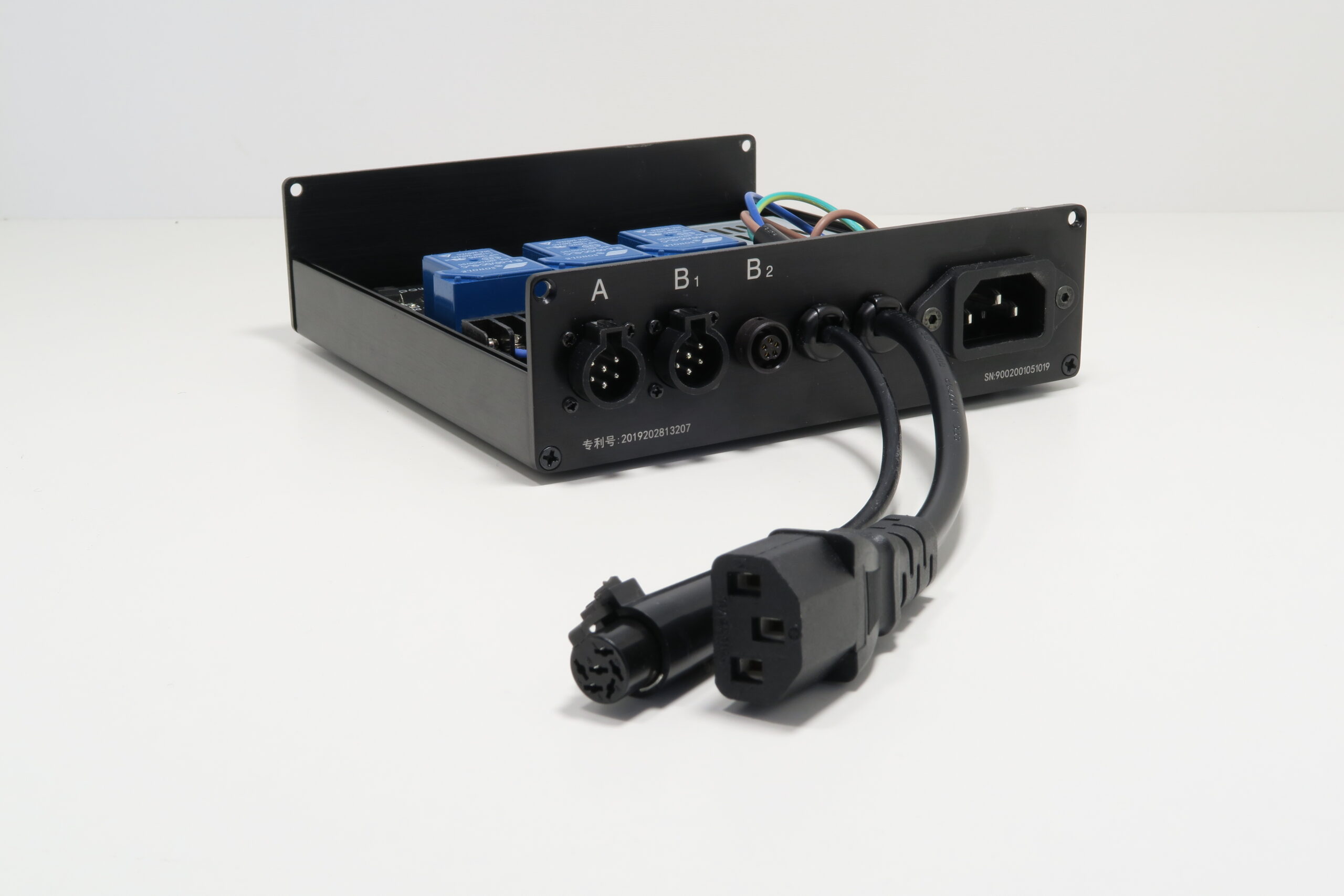


If I disregard a few more drawbacks, everything was working fine for the next two years until I purchased JBC AN115A SMD tweezers.
Since I had never used soldering tweezers before, I was blown away by their practicality.
However, the only way I could use the tweezers was if I disconnected the NT115 handle from the back of the module and then connected the tweezers. All of this while feeling my way through multiple cables in the back of the module and fiddling to connect the small connector. One can imagine that it wasn’t a very practical solution.
All three handles were truly necessary, and I had no space on my desk or the money to buy another JBC station. Nor was I willing to purchase a Chinese knockoff station that did not use the original handle with the correct connectors. That’s why I decided to create a 3-tool selector that could accommodate the T245 (general purpose), NT115A (SMD handle), and AN115A (SMD tweezers) on one JBC station.
JBC 3-Tool selector
Pros:
- “Cheaper” upgrade to make use of three different handles on single, original JBC station.
- Uses original handles with their original connectors.
- Front power switch to bypass the JBC station one (inaccessible in the back).
- Small footprint
Cons:
- Manual handle selection (don’t know how to solve automatic one)
- NT115A (15W) handle driven as T210 (25W), but it should be OK for the AN115A tweezers (2x15W)
- Tad slow 3 second switching (limited by JBC soldering station’s time to recognize the tool change)
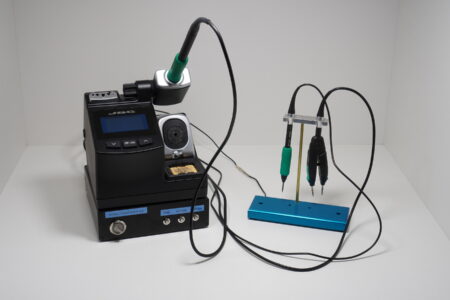
Theory of operation & the Build goals:
The general idea behind the operation is quite simple. When the handle select button is pressed, the relays switch so that the wires of the selected handle are connected to the soldering station.
It looks straightforward, and indeed it is, but there are some caveats:
- The tool (T245/T210, 50W/25W) must be recognized by the station for proper operation.
- Sufficient time must pass between disconnecting one handle and reconnecting the new one. Otherwise, the soldering station won’t have time to react, and it won’t recognize the correct handle.
- To ensure everything works properly, eleven relays must fit within a small enclosure.
- All connectors on the back must be original, allowing any other factory handle to be used without additional rework.
- The front power button is added for convenience.
Problems & Workarounds
Problem 1:
One of the main challenges was fitting eleven relays into a small enclosure. These relays needed to handle frequent switching without eroding the contacts.
Workaround:
To address this, I selected nine slim-sized, medium-quality Hongfa-HF49FD relays. These relays have a single contact and can handle a maximum switching current of 5A, drawing approximately 120mW of power.
While the 5A rated switching current should be suitable, I still had concerns about contact erosion due to constant switching under load. I wanted to avoid troubleshooting or replacing 3, 6, or 9 relays if issues arose in the future.
As a solution, I inserted a relay into the main ground wire coming from the soldering station toward the other relays. This additional relay is the FINDER-36.11.9.005, physically larger and rated for 10A. I affectionately refer to it as the “sacrificial relay.”
The primary purpose of this sacrificial relay is to disconnect the main line just before the smaller relays need to switch, and then reconnect it after all settings are in place. This way, any contact damage occurs within the sacrificial relay itself. Additionally, it ensures that the soldering station has enough time to sense when one tool is disconnected and recognize the tool change after the relay reconnects.
Problem 2:
For a soldering station to distinguish between the T245 or T210 handles (C115), only one jumper is required. However, if the connection is made permanent, undesired behavior may occur.
The JBC CD-2 soldering station is compatible with two handles: the T245 General Purpose Handle and the T210 Precision Handle. Theoretically, it also supports the T470 handle, although I have not personally used it and do not own one, so I haven’t had the opportunity to test it.
If I had a soldering station capable of supporting the entire JBC line of handles, and I wanted to properly utilize that option, I would need to add three additional relays.
However, since my soldering station only works with two handles, I opted for a simpler solution. I added one relay (RY11) to the main input cable. Regardless of the jumpers or resistors in the handle, the 3-tool selector is programmed to simulate which tool is connected based on the connector being used. Specifically, the Hirose connector corresponds to the T245 General Purpose Handle, while the Binder connectors are associated with the NT115A and AN115A (recognized as T210) handles.
I am well aware that the T210 handle uses a Hirose connector and if I were to connect it to my 3-tool selector, it would be recognized as a T245 handle. However, I don’t have a need for the T210 handle since it is oriented toward SMD work, and the C115 tools are a much better fit for that purpose.
In summary, when the T245 handle is selected, RY11 remains open. Otherwise, if any of the C115 handles are active, RY11 is closed.
I’ve also tried an option where no relays were used by directly connecting the pins needed for T210 handle recognition. However, this approach resulted in incorrect temperature measurements because all of the handles share the same “Standby” connection. To address this, I introduced an additional relay. The eleventh relay.
For this purpose, I used another HF49FD slim relay. Let’s refer to this relay as the “Tool Select” relay. By configuring the system this way, if someone wishes to use the T210 handle in combination with two C115 handles, they can remove RY11 and use a simple jumper (or change its behavior in the code).
The Build
Front Panel

The front panel consists of four switches. Each with its own indicator LED.
Main switch:
– controls the power supply for the selector tool
– supplies power to the soldering station.
– activates power for the tip cleaner..
That way the JBC soldering station power switch (inaccessible on the back) is always ON and the soldering station turns on as soon as the front switch on the 3-Tool selector is activated.
The other three switches are metal 8mm momentary switches. Each one selects the tool you want to use.
The switch corresponding to the handle in use is illuminated.
Back Panel

Consists of:
- Standard IEC 10A input socket.
- Output cable that powers the JBC soldering station.
- Output cable powering the JBC CLMB-A Tip cleaner.
- Connection cable for the main handle output from JBC soldering station.
- 2 x Binder connectors for NT115A handle and AN115A tweezers.
- 1x Hirose connector for T245 Handle (can be used for T210 with a small software modification).
The original TEC Extension module came with two Hirose T245/T210 connectors, so I had to order new Binder 09-0998-00-05 connector and mount it with a metal plate adapter that was made from scrap.
Inside of the unit

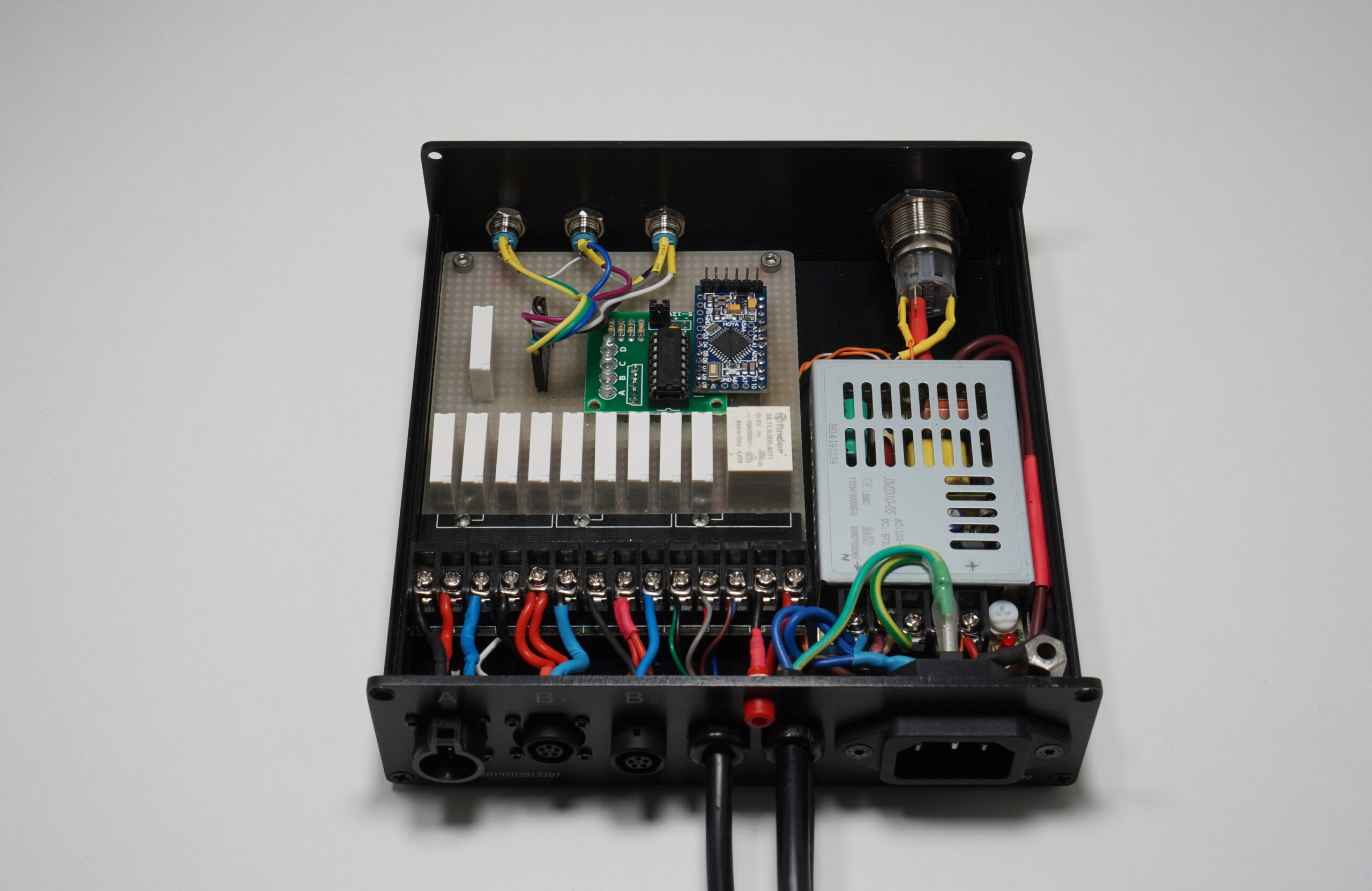
The main power supply is 5V 2.0A, which originally came with the TEC extension module. The main PCB is simply a piece of protoboard cut to the right size. Since the connectors on the original PCB were perfect for my use, I simply cut them off from the original board and mounted them on the protoboard.
The “brain” of the unit is an Arduino Mini Pro clone that I found in my drawer.
To drive the relays, I purchased a cheap ULN2003 driver board from Aliexpress.
The front panel switches are connected through a connector, allowing me to unplug them if needed.
For low-power traces, everything was connected on the bottom side of the PCB using 0.14mm² (26AWG) PTFE insulated copper wire (repair wire).
For the relay contacts to screw terminals, a larger gauge wire was used.
PCB is built cheap and dirty (same as the software), but it has been serving its purpose flawlessly for almost two years now.
Schematic (available in PDF)

JBC Handle Pinouts (available in PDF)
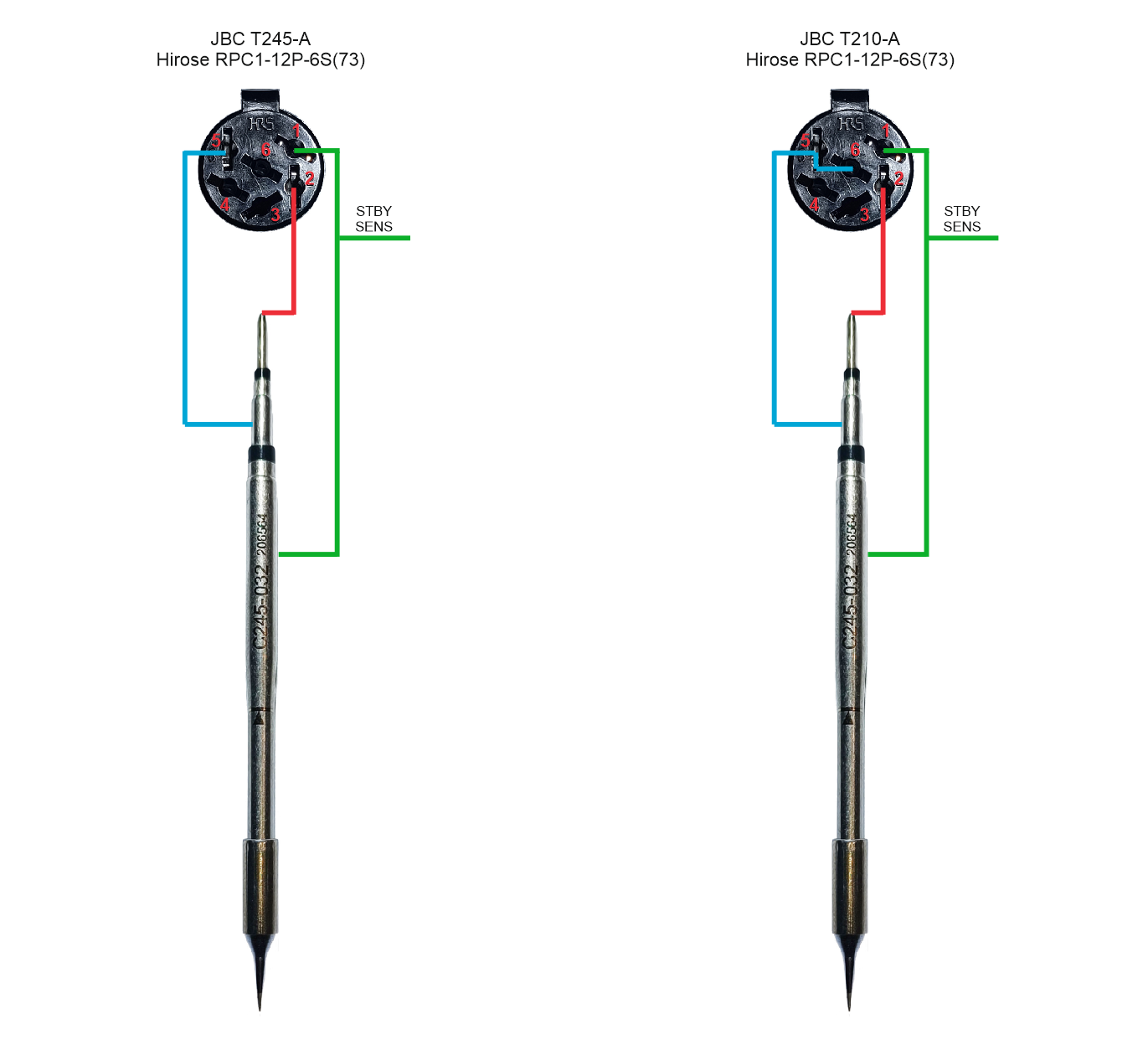

Library (PDF downloads)
JBC 3-Tool Selector
JBC Handles Pinout
Binder 09-0998-00-05
Binder 99-0995-100-05
Hirose RPC1-12P-6S(73)
Hirose RPC1-12RB-6P(71)
Hongfa-HF49FD
FINDER-36.11.9.005
Handle Stand:


The handle stand was a quick and improvised job. I made it from scrap aluminium parts that I had lying around. Despite being a temporary solution, it has been in use for almost two years now. As the saying goes: “There is nothing more permanent than a temporary solution that works.” 🙂
External connections:
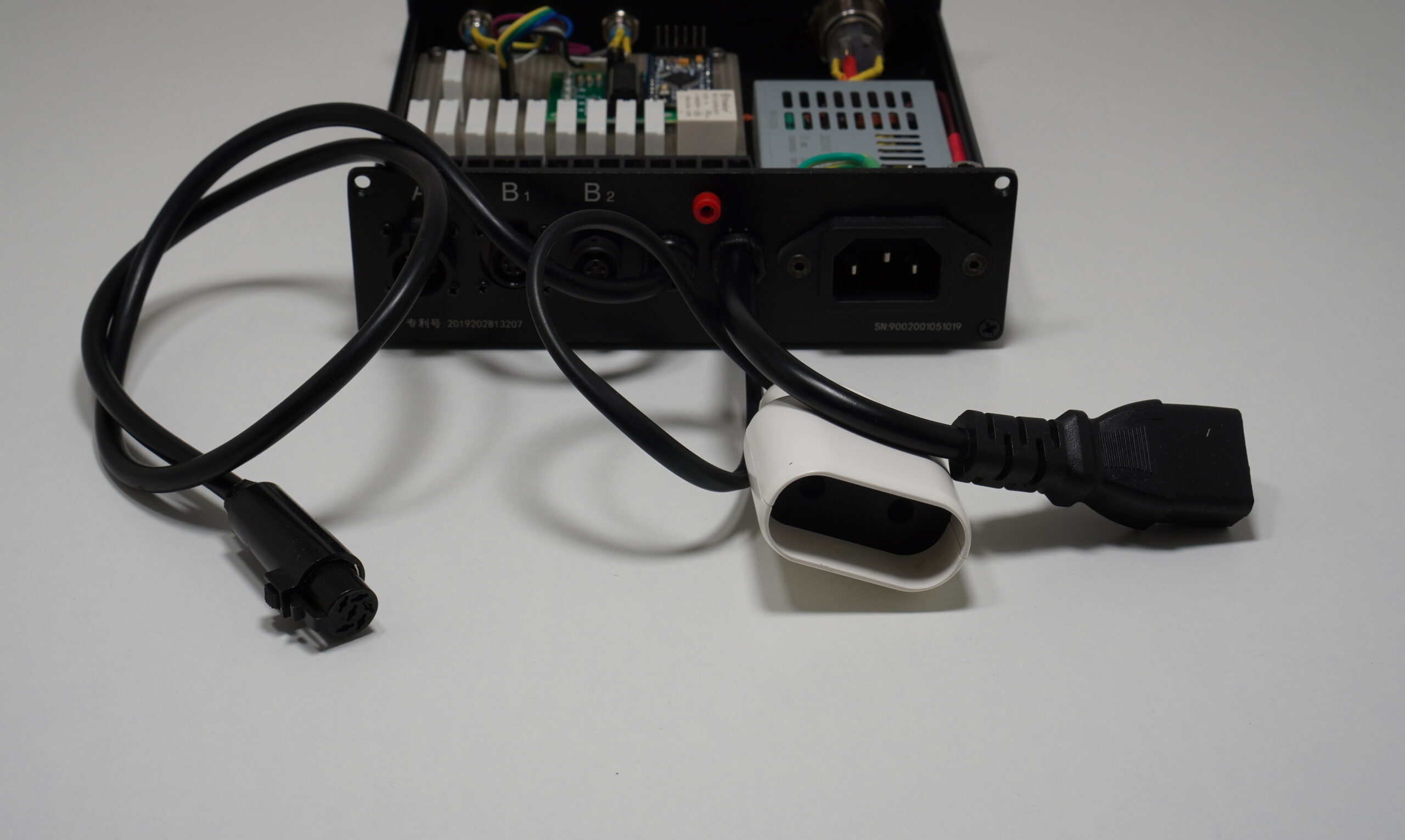
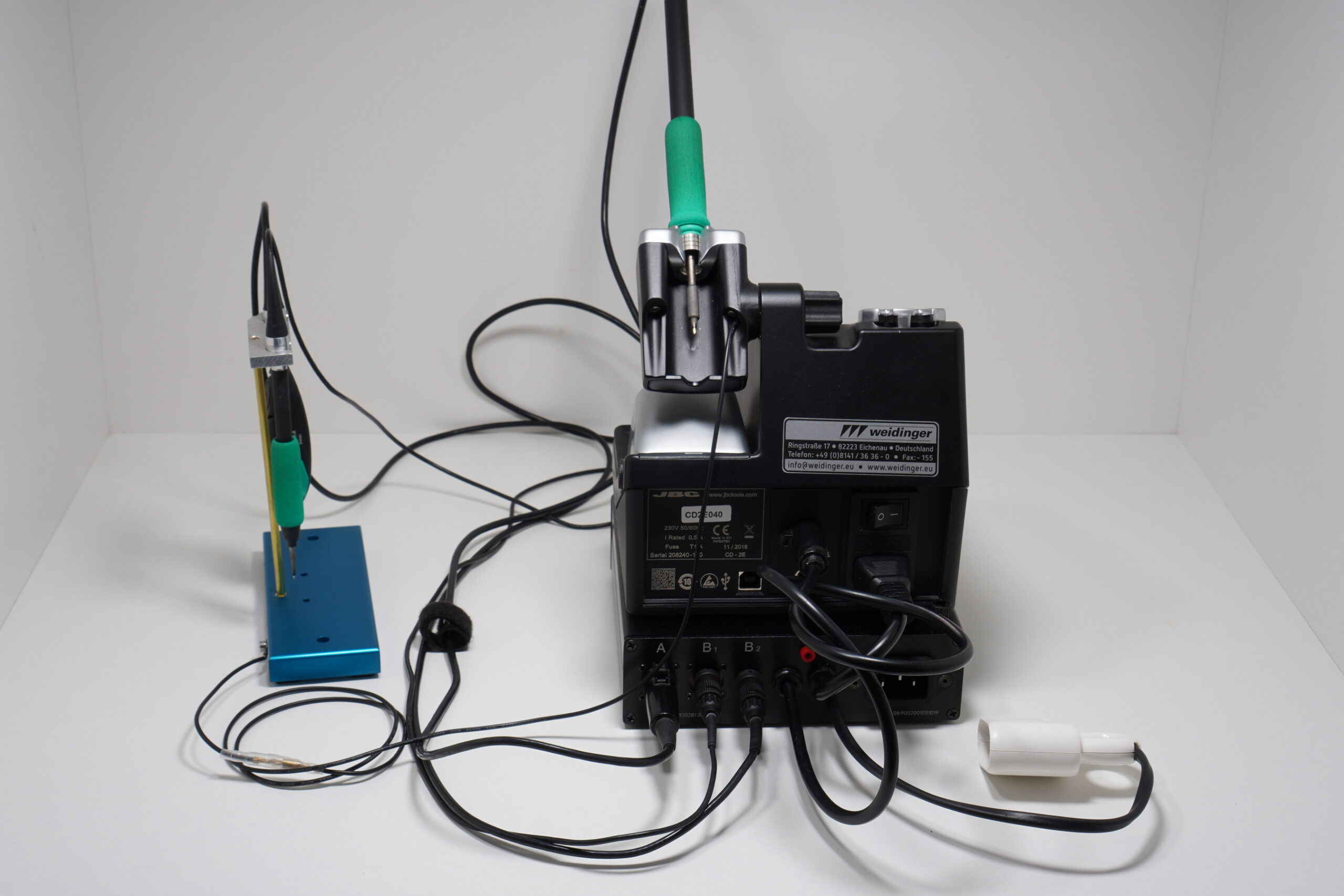

Software:
Code is as simple as it gets.
The default turn-on state is the T245 handle connected to the soldering station.
After that, it just loops, waiting for an input and then sets the correct relay positions.
3-Tool selector in use:
UPDATE!!
It took me almost two years to talk myself into investing time to document and publish this build. In a meantime I stumbled upon a product form Aliexpress called: “Kaisi K-508 Soldering Station Expander For JBC Soldering Station T210/C115/T245“.
The product itself looks interesting although it misses the point of being compact (under the station). It also supports only one C115 tool. But in comparison to the original TEC extension module it allows selection between T210 and T245 handles.
Compared to my solution, it seems to support automatic recognition of the picked up tool, which is nice.
I have no intention of buying it since it is over 200€ (215$), and my solution works great for my needs.


Hello,
can you share PCB design data? Thank you.
Hi StavJi,
I am sorry but this thing is built on universal proto-board and connected with jumper wires. There is no PCB design.
Hi! Interesting, but according to your scheme, voltage is supplied to all handles at once?
On the contrary, voltage is not applied until you press a button, and the software activates the relay set designated for the selected handle.
I also find it strange. It feels like each button press is just turning the same pins on or off for these handles.
Hello! Awesome project and looking forward to building my own.
1 question; what is the function of the wire that goes from the DIY stand to the back of the JBC (close to the soldering iron) ?
Thanks in advance.
Hey Dennis,
The wire is used to sense when the handle is put in the stand. That triggers the station to go in “standby” mode and lowers the heat on the tip.
Tool that is in the station already has it built-in but other two tools need that wire you mentioned.
Ah that makes sense. Where do i connect the wire to in the JCB stand?
There is a screw deep in the holder of the original handle. You can see it from back of the tool holder in the hole. It has a contact with a metal piece where you put your handle when not in use. I connected the wire to that screw from behind.
Hello,
I built this system but I can’t get it to work, I sent you an e-mail via the contact page. Can you maybe check your mailbox ? I would really appreciate some help, maybe you can find the problem.
Best regards and thanks in advance.
Dennis
I received it but my time is currently very limited so I didn’t have a chance to respond.
Druzhe,
Jem mozhesh da mi poshaljesh sliku od Pin shema na originalni stecke od JBC AN115A ?
Hvala
Oprosti, promakla mi je tvoja poruka.
Shema je vec na stranici, desna slika na: https://lajtronix.eu/wp-content/uploads/2024/02/JBC_NT115A_AN115A_Pinout.png
Did the tec unit support the AN115A tweezers
Not by default. But a minor change in wiring of the connector was needed to make it work.
Could you point me to the wiring diagram?
And what components are needed the number?
Thanks
I seen this one but wat type of diods do you have the part numbering
https://lajtronix.eu/wp-content/uploads/2024/02/JBC_NT115A_AN115A_Pinout.png
No need to add anything. Those are inbuilt (part of the tweezers). They are shown so ppl understand how they work.
Sorry but I can’t. I did it like three years ago from my head and I don’t remember exactly. It was one wire that needed to be connected to a different place.
I was able to acquire a tec extension module IV it’s a mark 4 .
Seems this version supports the an115-a it’s marked on the sticker on the box in Chinese
Great. So they finally support it. I hope they made some more improvements regarding to version 1.
for the an115-a the diodes and the 68k resistor are not in the 3 tool selector schema??
Those components are a part of the tweezers themselves. They are built inside from JBC.